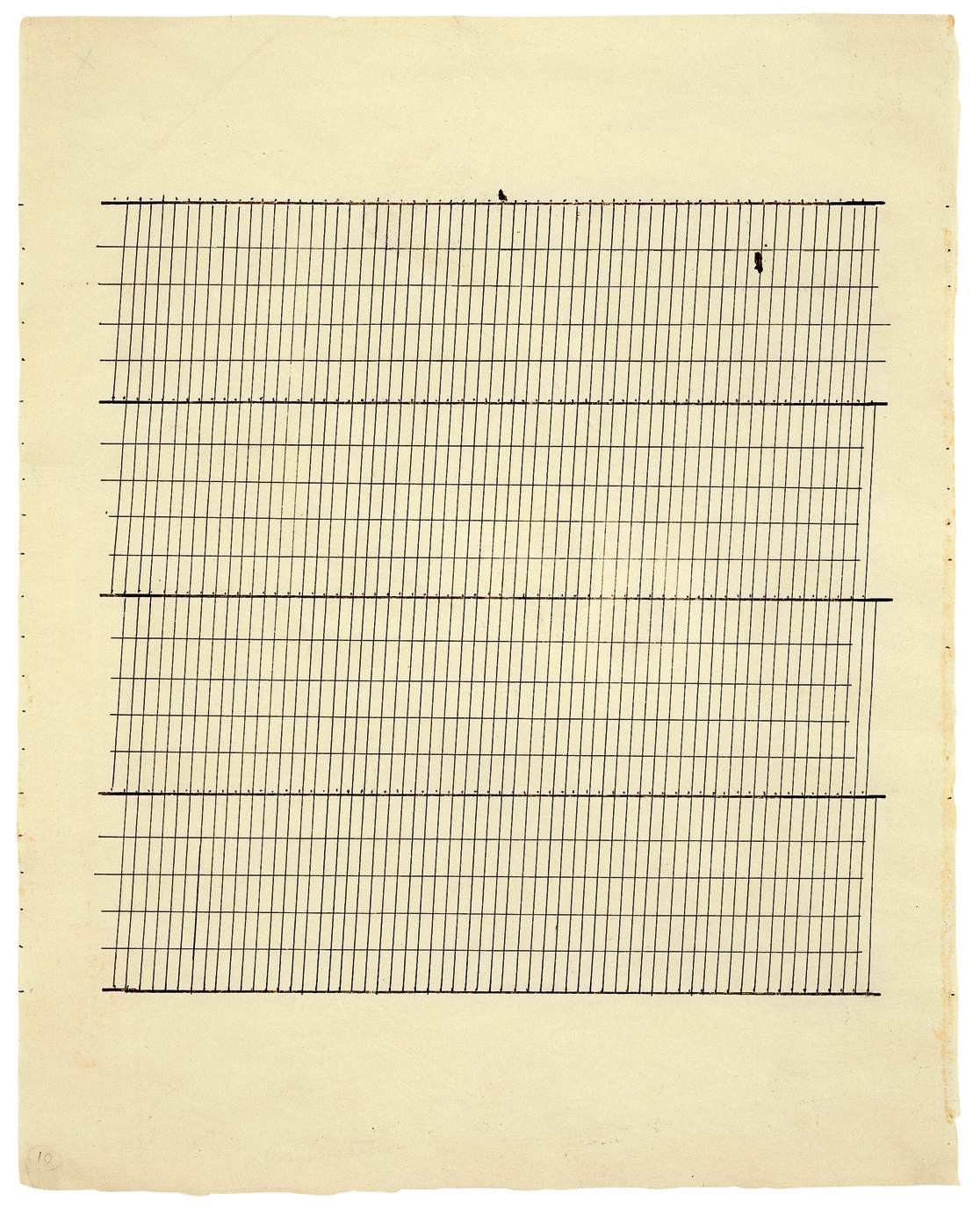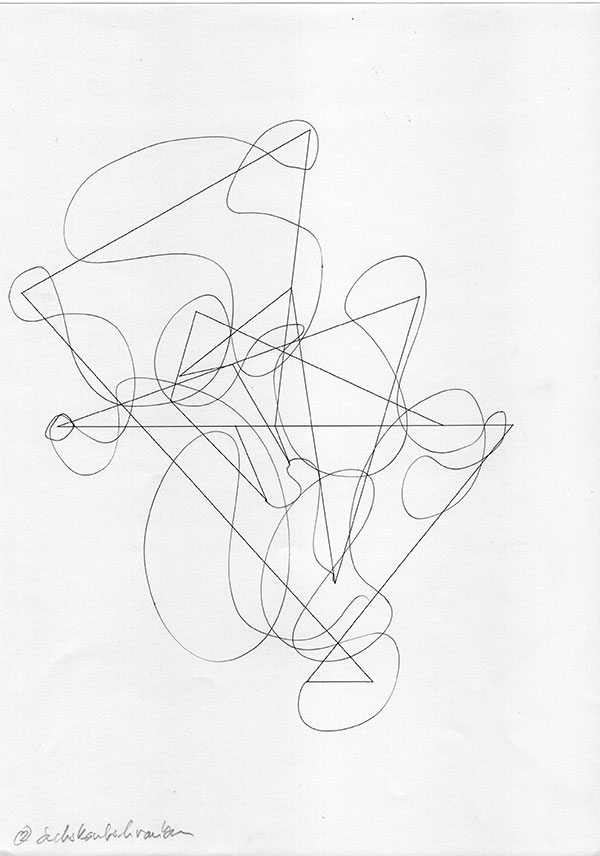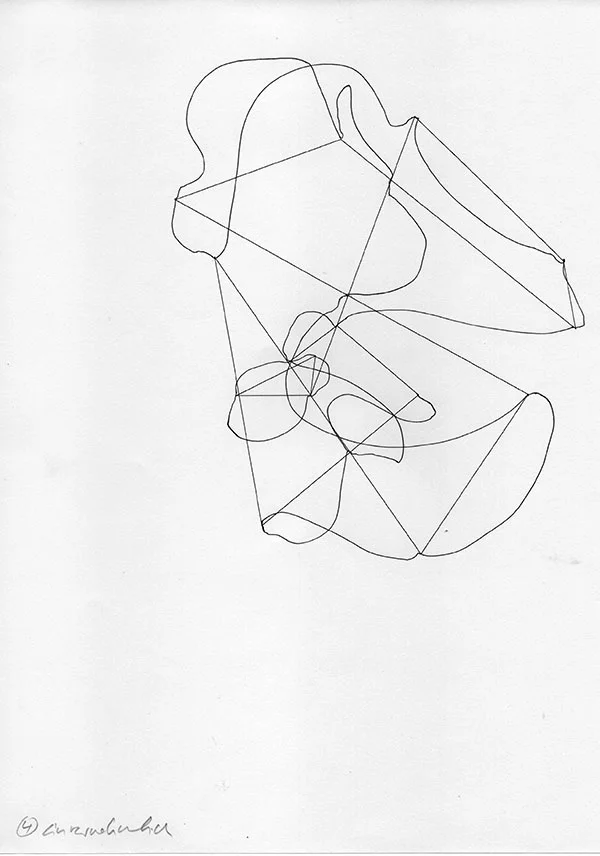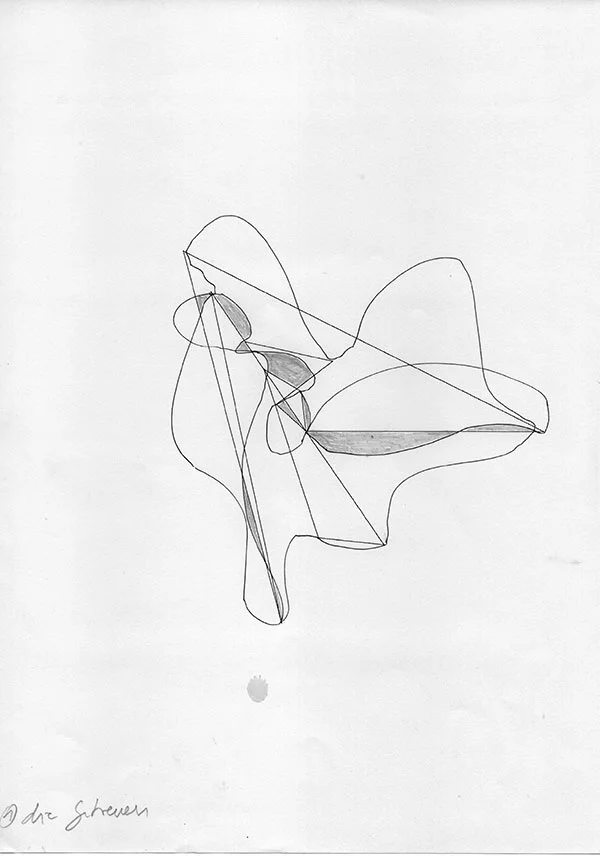5th Lecture 2015/2016 »Area of Inter-Position«
Every living being produces its own vivid volume, we can also say a vivid living expansion. To have a vivid volume, which means to preserve the volume by constantly renewing it, is the characteristic of everything we call alive. The precondition of every living being is the catalogue of natural laws. Since the Age of the Enlightenment the task of the natural scientists is to discover and name these laws. By discovering and using these laws, civilization had made enormous progress. Until now we have not been able to produce a living volume. All attempts to do so have produced several kinds of deformity of the existing volume but not a living expansion. We find the same problem with the Humanities. From the viewpoint of society, their task should be to define the laws of living together in the way of humanity. In relation to the Humanities, this has also been the task of visual and performing arts and especially of design. We have seen during the last decade that this attempt also seems to run into a deformity; first the war of ideologies (which is not over yet) and now the clash of civilization or better to say a clash of civilizational alienation (with all of the conflict partners) caused by inner-civilizational loss of identity (which is at the beginning).
Maybe the problem is the attempt itself. Sure, there is nothing wrong with wishing to transform the world into a better one which means to expand the vivid volume and push back all tendencies of congealment and wasting away but the question is: are we really able to change the volume and at what price?
To change the volume also means to change the structural pre-conditions (we call grammar) to make a single corpus as stable as possible. The attempt of optimization is based on the idea that it should be possible to change the grammatical preconditions (in Sciences, for example, by changing the structure of the DNA) to get a highly resistant corpus (to say it in terms of the human living: a highly resistant body). This wish is more than understandable, but on the other hand, we should be aware that every single body (which means every living volume) stands in relation to the surrounding bodies. This means every volume is given and taken by correlation. Ignoring this fact causes several serious problems and leads to several kinds of deformity.
Maybe we should direct our attention to another aim; the stability of the area of “inter-position” which is defined by the unstable bodies which form the border of this area.
Since the Age of the Enlightenment, we have tried to stabiles the human body by using methods which can generally be described as logical constructions. We assume that there must be a logical way to optimize the naturally given instability which means to assume that the construction of nature must have a natural defect. From the viewpoint of the separate individual, this conclusion may be logical. Form the viewpoint of “inter-position” (which logically cannot be taken by a separate individual and which cannot be described as logical) the stability should belong to the area between the unstable bodies. The viewpoint of interposition can only be taken by entering the “inter-position”. This happens by viewing a drawing or picture or reading a poem or a book: being identified with the in-between of two (or more) human bodies.
What I am doing is simply fixing fragments of recognition by writing them down. As I mentioned before, the specific characteristic of fragments are not to be connected with the origin corpus like particles. Therefore the changing from a particle into a fragment happens by fixing it. What we are fixing is just the particular recognition of a sensitive affection which we are not able to assign or which we consciously separate out of its assignment.
The fragments could be a sentence, also a phrase or just one word. In writing, I bear in mind three aspects: first the rhythm of the spoken words and second the lineation. The lineation depends on one hand, on the rhythm and, on the other hand, on the intersection between the syntactical structure of semantical assignment, which is the third aspect.
It is important to differentiate the syntactical structure of semantical assignment and the common meaning of a single word. The syntactical structure refers to any movement from point to point (made by a body to come closer or to prevent being touched – we often talked about this topic during the last lectures). If we separate a constellation of words from their original correlation and use them in their common meaning, we will get a semantical assignment with which a logical sequence can be described but with this description, it will not be possible to fix the factual discontinuity of our perception.

Agnes Bernice Martin (March 22, 1912 – December 16, 2004) was an American abstract painter. Often referred to as a minimalist, Martin considered herself an abstract expressionist.
Agnes Martin, Tate Shots, June 2015
As we can see, the syntactical structure of the semantical assignment of a word (or a constellation of words) is not equivalent to its common meaning. The common meaning is a shared intellectual definition which we need to describe our activities and the surrounding reality as a logical construction. In contrast to this definition, the syntactical structure of semantical assignment refers to the concrete movement (upwards or downwards, from left to right, from back to front) of the physical rapprochement or prevention which is fixed in the horizontal, vertical or diagonal combination of the lines we call letters or more generally signs.

Until the point at which we define the grammatical structure (it includes the syntactical structure of semantical assignment) the way to proceed with your work of art or design may be difficult to understand but you have the opportunity to understand it intellectually. We are still talking about the grammatical groundwork of any artistic approach.

The next level you have to enter within the process of making art or design is the uncertain area of sensitive volume, i.e. the area of “inter-position” (remember: an area limited by the unstable bodies). To get a sensitive sustainability (and therewith also to get an intellectual sustainability) it is highly important to reach and realize this level in your work. I am talking about this level as an “uncertain area” because it could not be reached by an intellectual effort. You have to work physically on and with it.













